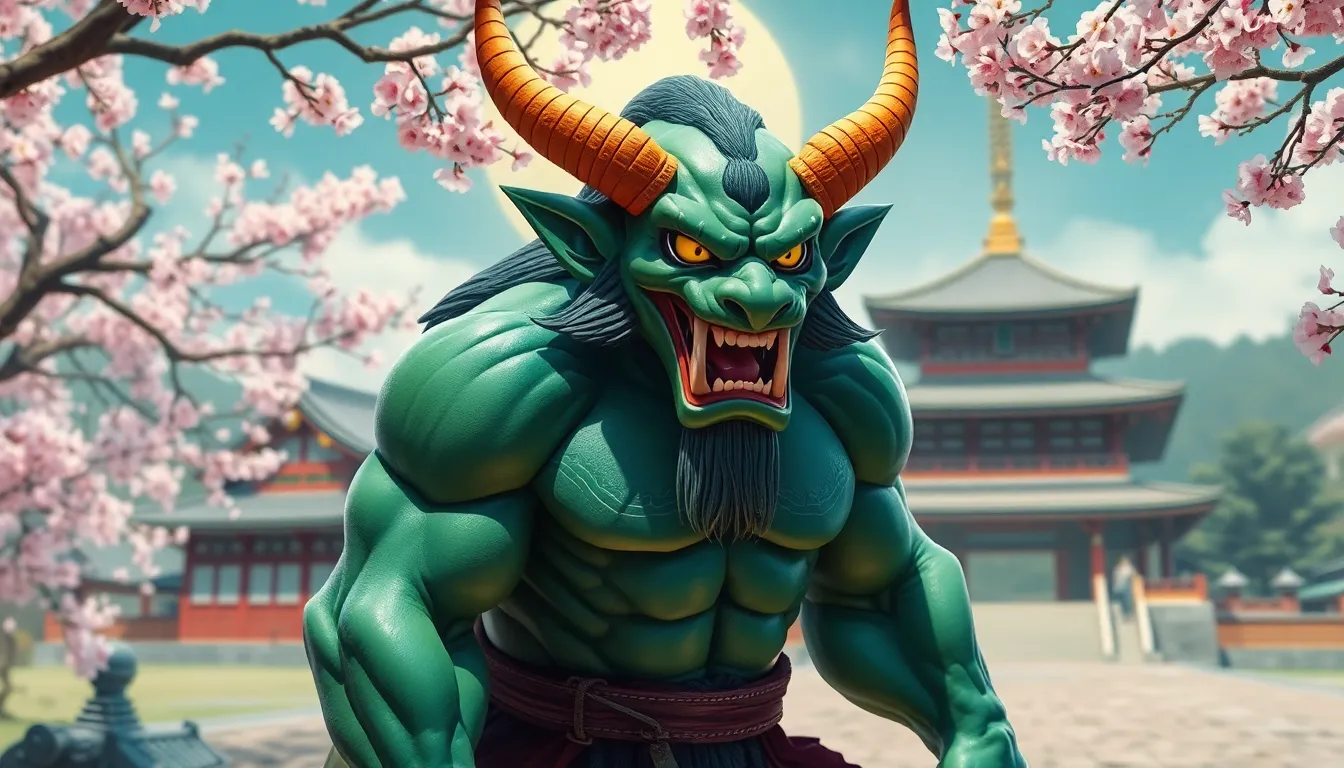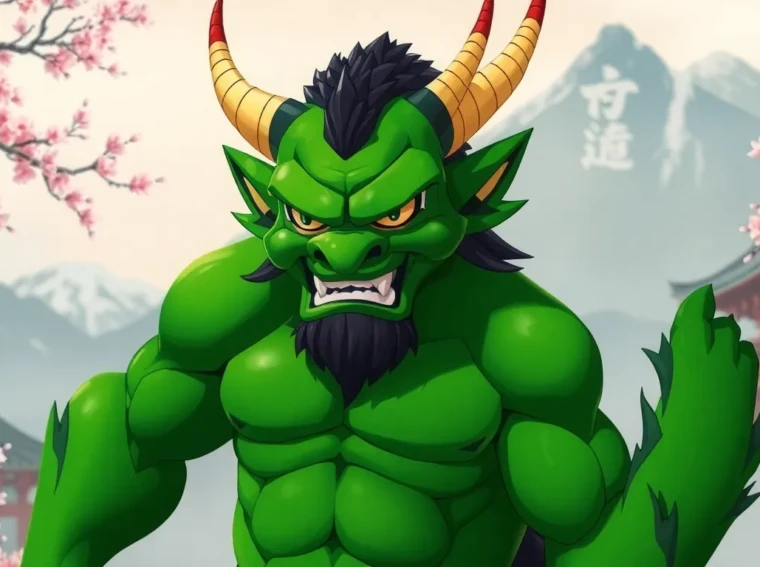In Japanese folklore, the green oni stands out as a captivating figure, embodying both strength and complexity. Often depicted with vibrant green skin and horns, this mythical creature represents a unique blend of fearsome power and misunderstood nature. Unlike their red counterparts, green oni are frequently associated with more nuanced traits, such as loyalty and a protective spirit.
As tales of the green oni continue to evolve, they capture the imagination of those exploring Japan’s rich cultural heritage. From traditional stories to modern adaptations, these beings challenge the conventional notions of good and evil, inviting deeper reflection on the duality of human nature. Delving into the world of the green oni reveals not only a fascinating character but also a window into the values and beliefs that shape Japanese society.
Green Oni
The green oni occupies a significant place in Japanese folklore, representing a nuanced view of strength and character. This figure stands out with its distinct features and traits, often challenging conventional representations of good and evil.
Origin of the Green Oni
The green oni traces its origins to ancient Japanese mythology, where it first appeared as part of the broader oni classification. Oni, often depicted as demons or ogres, emerge from traditional beliefs surrounding spirits and the supernatural. The green ono specifically symbolizes aspects such as resilience and moral complexity, with narratives emphasizing its role as a protector rather than an adversary. Folktales featuring the green oni often highlight its interactions with humans, showcasing how these encounters shape cultural morals and values.
Characteristics of the Green Oni
- Appearance: Vibrant green skin and unique horn formations distinguish the green oni from its red counterpart. The hue signifies nature and harmony, contrasting with more aggressive aspects commonly associated with other oni types.
- Personality: Loyalty stands out as a prominent trait; the green oni often protects and aids those in need. This depiction counters the typical image of oni as malicious beings.
- Symbolism: The green oni represents strength coupled with compassion. Such duality reflects the complexity of human emotions and moral dilemmas, underscoring the figure’s role as both a warrior and a guardian.
- Cultural Significance: The green oni influences various art forms, including literature, theater, and visual arts, enriching the cultural narrative surrounding this unique mythical creature. Its presence in popular media helps modern audiences connect with traditional values.
Green Oni in Japanese Folklore

The green oni holds a distinctive place in Japanese folklore, showcasing its complex character and symbolism. This figure features prominently in various myths and legends, serving as both a protector and a source of moral lessons.
Representation in Myths and Legends
In myths and legends, the green oni presents a multifaceted persona. Often depicted with vibrant green skin, it contrasts with the red oni, which typically represents wrath and chaos. The green oni, instead, embodies virtues like loyalty and compassion, frequently emerging as a guardian of humanity. For instance, tales like “Kintaro” illustrate the green oni’s role as a protector, showcasing its relationship with humans. Stories often emphasize its strength and courage, contrasting the green oni’s protective nature against the traditional portrayal of other oni as antagonistic figures. This representation challenges the binary view of good and evil, highlighting the complexity of each character.
Role in Japanese Culture
The green oni plays a significant role in shaping cultural values and morals within Japanese society. Through various art forms such as Kabuki theater and ukiyo-e prints, this figure contributes to storytelling and cultural identity. The green oni serves as a symbol of resilience, teaching lessons about loyalty, friendship, and the importance of understanding beyond initial appearances. Festivals and celebrations often feature representations of the green oni, reinforcing its status as a beloved figure. This connection to cultural heritage ensures that the green oni remains a relevant symbol, bridging traditional values with contemporary interpretations, fostering community and reflection among modern audiences.
Modern Interpretations of Green Oni
Modern interpretations of the green oni remain vibrant in various cultural expressions, evolving while maintaining connections to its historical roots. These representations continue to explore themes of strength, complexity, and morality.
Green Oni in Popular Media
Green oni frequently appear in popular media, including video games, anime, and films. Characters inspired by the green oni often embody traits of loyalty and protection. For instance, in the game “Okami,” the character Kushi demonstrates these characteristics, symbolizing the green oni’s role as a guardian. Anime series like “Demon Slayer” feature green oni references that highlight transformation and redemption, emphasizing moral ambiguity. Other films use green oni motifs to challenge traditional concepts of heroism, showcasing characters who balance their fierce nature with compassion.
Green Oni in Art and Literature
Green oni also appear prominently in contemporary art and literature. Artists reinterpret the green oni’s image in paintings and sculptures, focusing on its vibrant colors and complex emotional expressions. Literary works explore the green oni’s moral dilemmas, reflecting societal challenges and personal growth. For example, modern short stories may depict a green oni helping a community navigate conflict, reinforcing themes of friendship and understanding. This artistic and literary engagement with the green oni illustrates its ongoing relevance, influencing how society perceives strength and character in today’s context.
Conclusion
The green oni stands as a testament to the rich tapestry of Japanese folklore. Its portrayal as a protector and symbol of loyalty challenges traditional views of good and evil. This unique figure continues to resonate in modern culture, appearing in various media and art forms while maintaining its historical significance.
Through tales of courage and compassion, the green oni teaches valuable lessons about understanding and resilience. As society evolves, the green oni remains a beloved character, bridging the past with contemporary interpretations. Its enduring legacy offers a deeper understanding of human emotions and moral complexities, making it a vital part of cultural narratives today.

